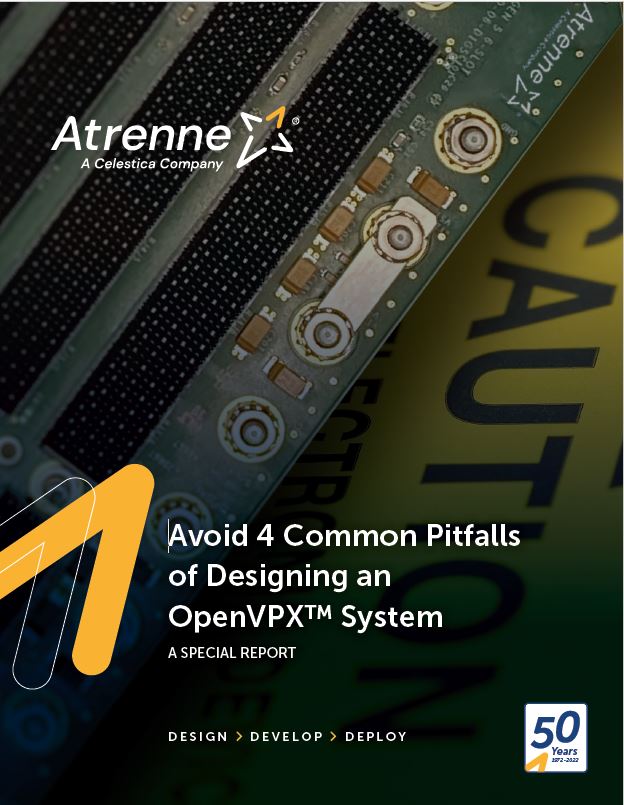Special Report
Avoid 4 Common Pitfalls of Designing an OpenVPX System
Get the Resource
"*" indicates required fields
Designing a new OpenVPX system isn’t “just like VME.” This special report distills lessons from hundreds of integrations to help you avoid the four issues that most often derail schedules and budgets. Download the PDF to get practical, engineering-level guidance from Atrenne’s Hybricon® backplane and rugged chassis experts.
What you’ll learn
-
Why VPX ≠ VME: Key architectural differences in pinouts, backplane topology, and fabric speeds—plus what that means for module/backplane compatibility.
-
Signal Integrity that scales: How to meet VITA 68 SI budgets and reduce BER at up to 10.3 Gbaud, with examples of eye diagrams with/without equalization.
-
Thermal done right: Power trends for 3U/6U modules (often 2–3× VME) and how to select the appropriate cooling approach—forced air, baseplate conduction, Air-Air and Liquid-Air H/X.
-
Profiles that make—or break—interoperability: How to align Module, Slot, and Backplane Profiles across data/control/expansion planes (PCIe, GigE, SRIO).
Inside the report
-
Practical checklists for module/backplane compatibility
-
Guidance on SI simulation and verification for high-speed fabrics
-
A decision framework for chassis cooling selection
-
Clear explanations of OpenVPX profile mapping across planes
-
Common pitfalls, symptoms to watch for, and how to course-correct
